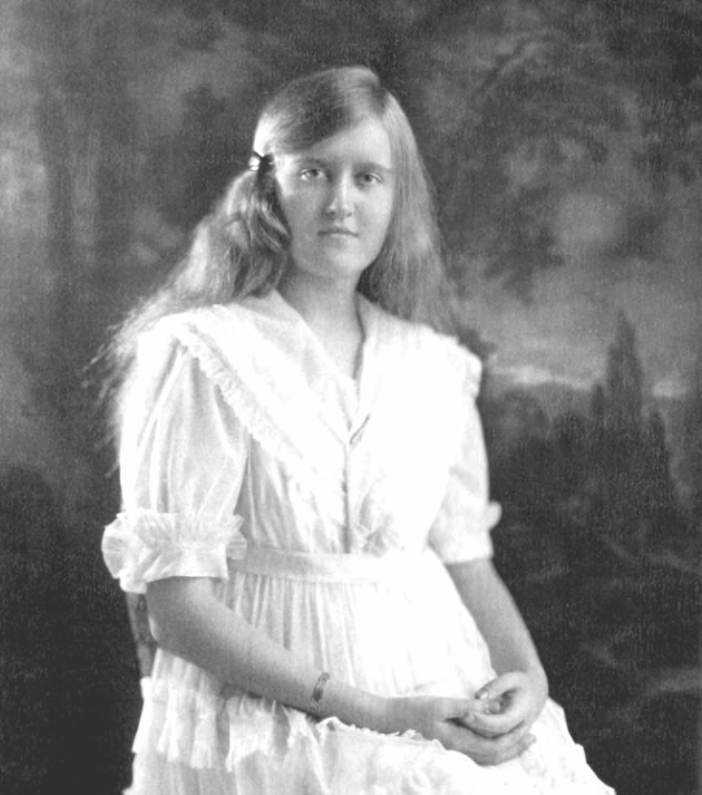Basic HTML Version

38
winter
|
spr ing
it Rancho Alegre.
With the acquisition of the ranch, her staff and their families had
a place of refuge in the event of further attacks. Also ranch livestock
supplemented the produce grown in the estate’s gardens for the families.
Best of all, dairy cows from the ranch provided milk that was churned into
butter at a Milpas dairy so her employees had no need to resort to oleo
during the war.
Albert’s daughter Barbara Hoelscher Doran grew up on the estate.
She remembers Anna and Huguette as being kind and generous and not
in the least reclusive. They entertained often and had a great interest in
music; both played the harp.
When the Clark ladies were in residence, Barbara was invited to tea
on the terrace. Huguette sent her French dolls, books and gift cards. They
encouraged her to learn to play music and bought her a piano on which
to practice, but she preferred playing one of the two grand pianos in the
mirrored music room of
Bellosguardo
.
Barbara remembers picnics and birthday parties at Rancho Alegre.
She swam in the reservoir and rode the horses. Sheep grazed in the
sloping pasture beyond the white picket fences. Her family even lived
there for six months while their home was being remodeled. It was an
idyllic childhood.
Huguette Marcelle Clark
In the 1920s, Huguette Clark was active in Santa Barbara and New
York social life, her name appearing on the society pages with great
frequency. She made her official debut in 1926, and married William
MacDonald Gower, the son of a business associate of her father, in
August 1928. The couple wed in a small ceremony at
Bellosguardo
.
The marriage did not last, however, so Anna and Huguette established
residency in Reno, Nevada. Charging Gower with desertion, she was
awarded a divorce decree in 1930. Immediately afterwards, Anna and
Huguette boarded a ship and sailed to Hawaii. Huguette reclaimed her
Clark last name but retained the married title. Barbara Doran’s research
revealed that Gower went on to marry several more times, always to
wealthy socialites.
Barbara remembers that Huguette and Anna continued to visit the
estate through the 1950s. By then they’d abandoned the private rail car and
flew into town, often staying at the Biltmore so the house wouldn’t need
to be opened for a short visit. Nevertheless, they quietly entertained guests
and enjoyed a social life while they were here, and were not particularly
concerned that their activities missed the attentions of the paparazzi.
In 1963, Anna E. Clark died. Besides bequests to various staff
members at her several properties, she asked that Rancho Alegre be
given to the Boy Scouts, a request that Huguette honored in 1964.
Huguette continued to live in New York, and never again visited her
estate in Santa Barbara.
On May 24, 2011, Huguette Marcelle Clark died at Beth Israel
Medical Center at the age of 104. According to various news reports, she
left the bulk of her estate to various charities with several large bequests
to her closest staff.
Bellosguardo
is to become a museum organized and
run by the Bellosguardo Foundation. The will, however, according to Bill
Dedman of msnbc.com, has been challenged by various members of her
extended family. The fate of the Clark Estate may depend on the outcome
of these challenges as the influence of William’s fortune continues to have
an impact on Santa Barbara.
(Sources not mentioned in text: U.S. Census records; various
contemporary articles in
The New York Times
; “The Lost 1908 William
A. Clark Mansion” by Tom Miller; www.onlinenevada.org/san_pedro_;
“A Butte Home” from 1888
The Miner
; various articles by Marilyn
McMahon, contemporary articles in
The Morning Press
and the
News-
Press
; David Myrick’s
Montecito and Santa Barbara
; vertical files of the
Santa Barbara Historical Museum. Special thanks to John Thompson of
the Copper King Mansion and Barbara Hoelscher Doran for sharing her
memories, research, and photos.)
Huguette Marcelle Clark circa 1920 (Courtesy of Copper King Mansion)

